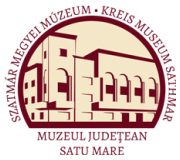Szőcs Péter Levente (szerk.): Sanislău. Ghid cultural şi istoric (Satu Mare, 2010)
Historical Data
dom, the early kings of Hungary “adopted” a great number of knights coming from Western Europe, especially from Germany. Significant political and economic privileges were granted to them, therefore they became prestigious members of the kingdom’s elite. The case of the Gutkeled ancestors is the same: they arrived in the Kingdom of Hungary during the reign of the King Peter Orseolo (1011- 1046) and they received from the very beginning a great number of royal donations, which made them one of the wealthiest estate-owners of the kingdom. The area of Ecedea Swamps was one of the centre of the kindred domains, since the earliest times, the 11th century. Over the next centuries, the kindred, and its most prominent descendant, the Báthori family, followed a precise strategy in order to enlarge the estates owned by them. They acquired additional properties especially around their former properties, through royal donations, purchases, and exchanges of estates. Thus, in 1338, Bereck, a member of the Gutkeled kindred, changed two estates situated in the remote county of Zărand with possessions at Sanislău in Satu Mare County, owned until then by the Bishopric of Oradea. Since this exchange, the village belonged to the Báthori family as part of the domain of Ecedea, through the Middle Ages and the Early Modern Period. Monumentul eroilor şi a deportaţilor din al Il-lea război mondial A második viláháború hősi halottainak és a deportáltak emlékműve Memorial of the deportees and soldiers of WWII 19
